Sign up for daily news updates from CleanTechnica on email. Or follow us on Google News!
Can you travel around Australia (a distance of about 10,000 miles) in an electric vehicle, towing a 2-ton caravan without stinting on any of the luxuries? Despite many naysayers (including our illustrious ex-prime minister Scott Morrison), you can! It will tow your van, it will tow your boat, it won’t ruin your weekend.
Last night, I got to catch up with Tim McLennan, who generously shared the highlights of his trip around Australia (the big lap) with me over the phone. His aim was to recreate a childhood family trip around the big lap (done in a diesel-powered car in 1993). This time he was hoping to go all electric. He and his wife Renee decided it would be a family holiday with a preference to being environmentally sensitive where possible, and thus, all electric.
Tim is an electrical engineer and likes the concept of EVs. “I thought it would be good to check out the amazing natural places while they still exist. Hopefully my kids can do the same with their kids. I asked myself: ‘Can it be done all electric?’ A whole bunch of people said it couldn’t be done. I didn’t want to just do a tour of charging stations, with attendant range anxiety in between. I didn’t want to rush.” He proposed a family holiday around Australia in an EV. Holiday first, EV second. Nine months of environmentally friendly glamping.
His van is a second-hand New Age Way Finder with off-road capability, modified to be all electric and more aerodynamic — net weight 2000 kg. With his background as not only an electrical engineer, but also in aviation, Tim was able to design and do most of the work himself. The Kia EV9’s 2500 kg towing limit gave him some wriggle room to increase the original weight of the caravan. The extra weight came from the addition of aerodynamic features, 2.5 kW of solar panels, and a 10-kWh battery.
He explained to me that the issue was not so much the weight as the aerodynamics. “If you can reduce the drag, you can reduce the range loss associated with towing.” Tim took the square back end off the camper and built in a triangular wedge boot (trunk). “It mimics the trailing edge of an airplane wing,” he explains, “The air goes over and under the van and joins up smoothly at the rear. This reduces drag by reducing turbulence. Much more energy efficient.”
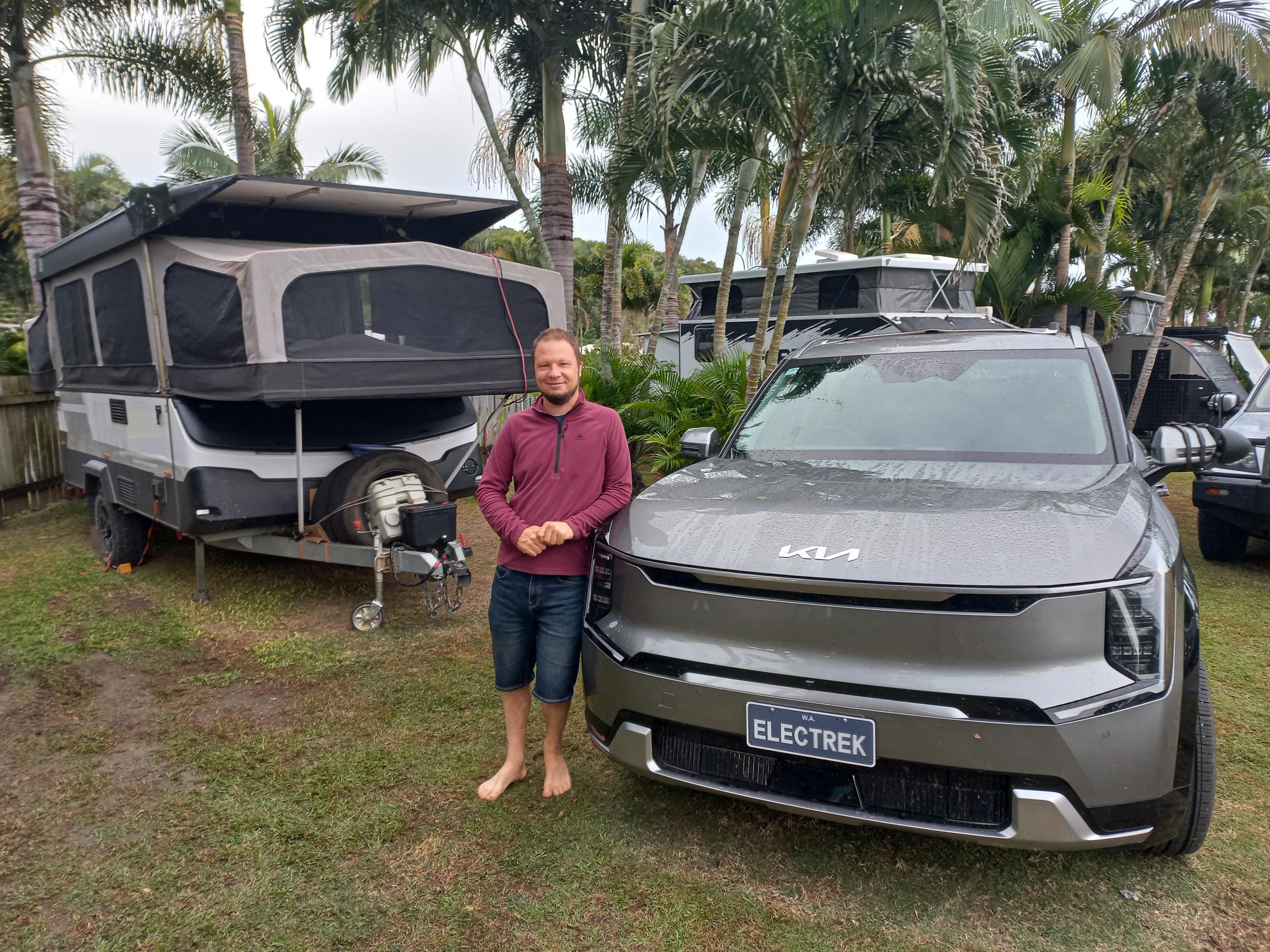
“What about the air currents between the van and the camper,” I asked, pretending to know more than I actually did. “Between the car and the van? Well, the original plan was to have it enclosed by stretch canvas (similar to the canvas on trucks). Car and van would then become one body for wind resistance. But we didn’t need to go to that trouble and ended up with an adjustable roof deflector to keep the air going over the top of the van. The Kia EV9 is the same height as the van so helps keeps the upper air flow smooth.”
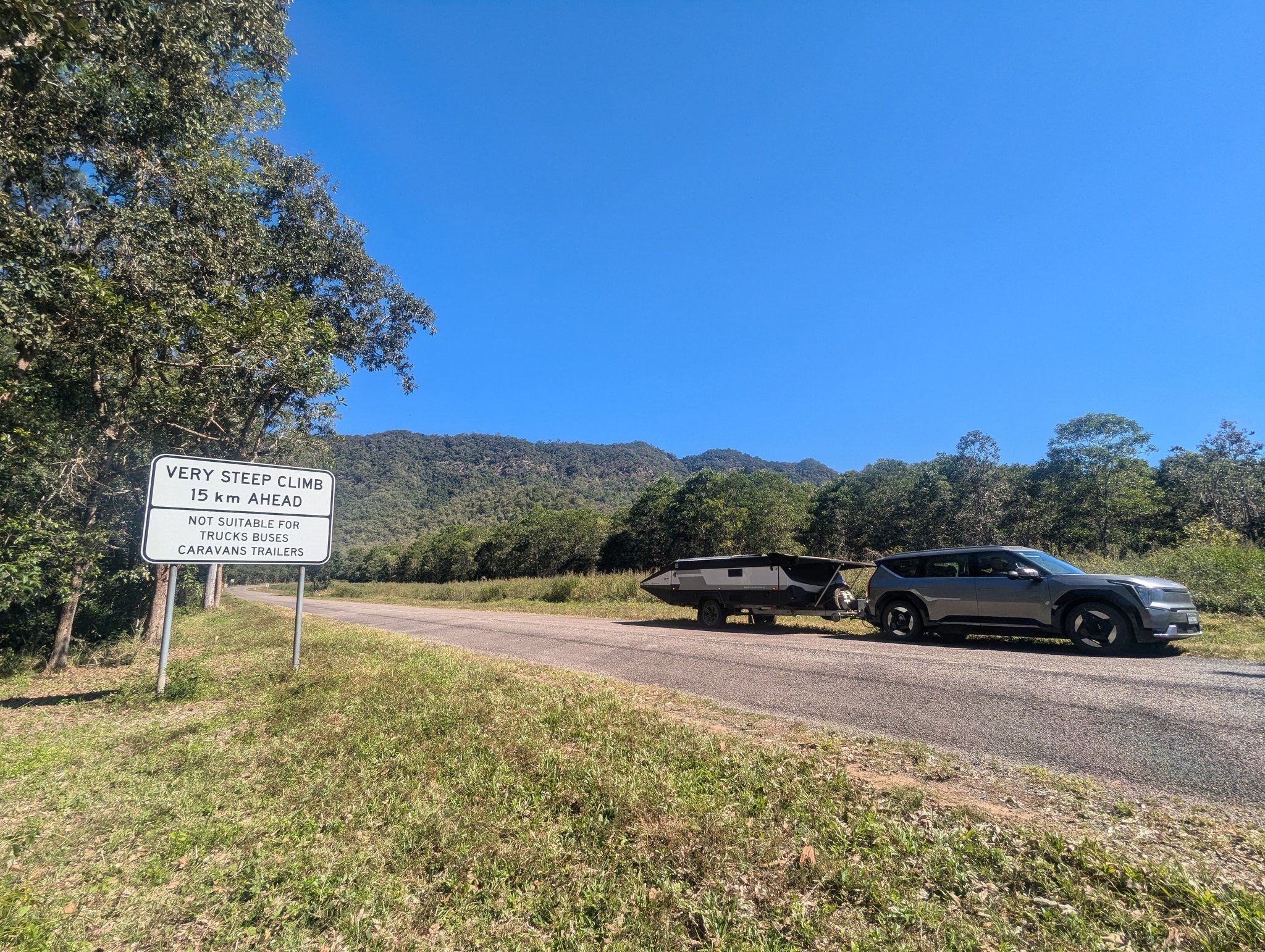
I commented that the “rig” is similar in looks to the diesel ones I see driven by Australia’s grey nomads. He agreed. That’s why he put the personalised plates on it “ElecTrek.” Though, there are still people who cannot believe it. “That’s not electric, is it?” is the frequent comment. An EV is unexpected out in the middle of nowhere. “How did you get out here?” He said he found that Outback stations frequented along the big lap are realising they can generate power through solar or wind and sell it to travellers in EVs. “It is much easier than shipping in fuel, storing it, and then selling it on. EVs will find it easier to refuel ‘off the beaten track.’”
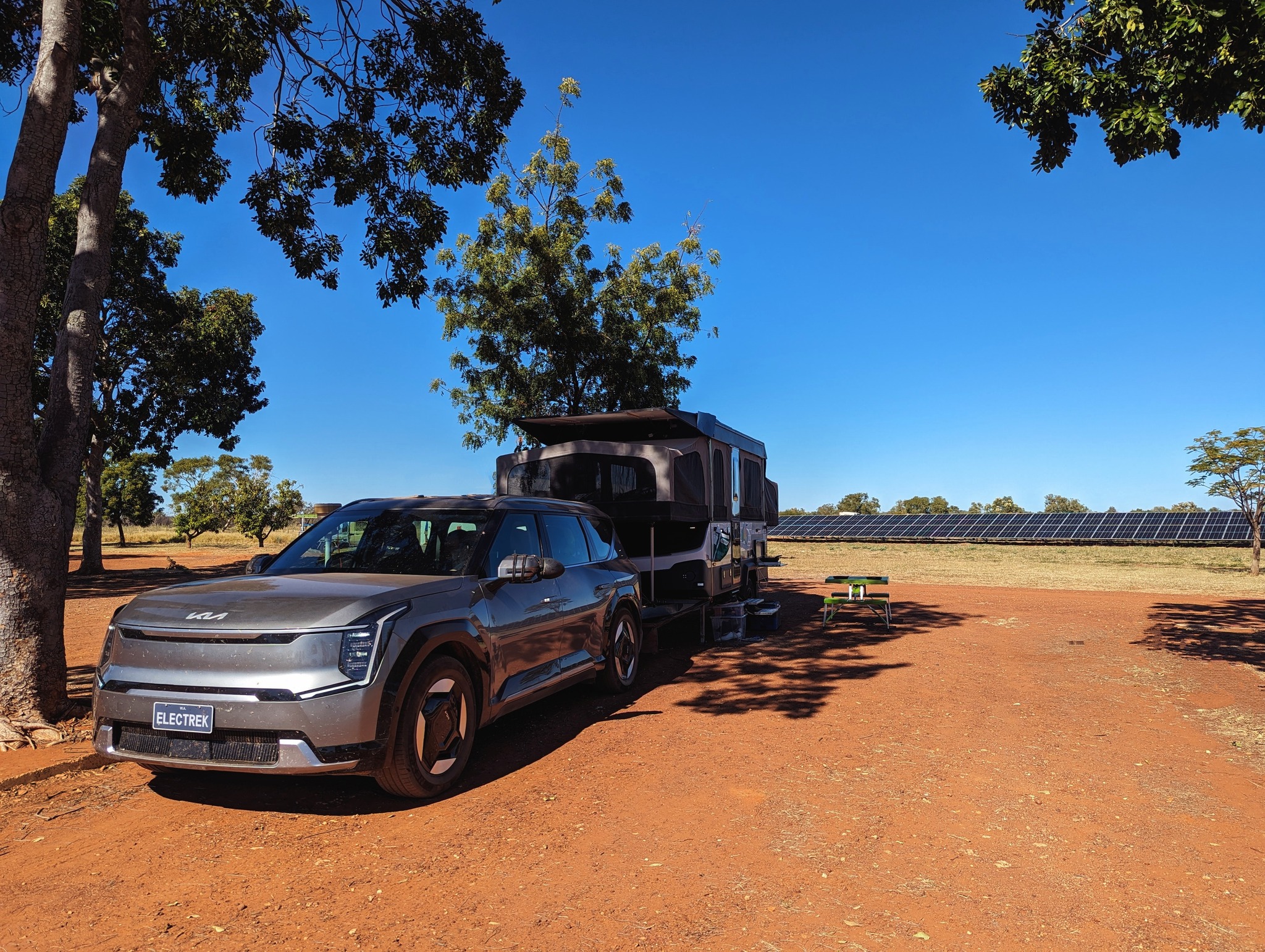
Glamping and keeping the family happy means Tim wanted to do the trip as electric as possible without too many compromises. He wanted people to be able to relate to this form of electric holiday travelling. “It’s not a huge step out of the travellers’ comfort zone to go electric. In fact, there are significant advantages. We fuel up when we are sleeping at a caravan park. If we stay 2 days in a caravan park, we are full. We didn’t need to use fast chargers as much as we thought we would. We do some local sight-seeing then fill up overnight. I think we spent less time at chargers than we would have done at petrol stations, just because the car fills up when we are sleeping. And we weren’t breathing in the fumes from idling when hitching and unhitching the vehicle.”
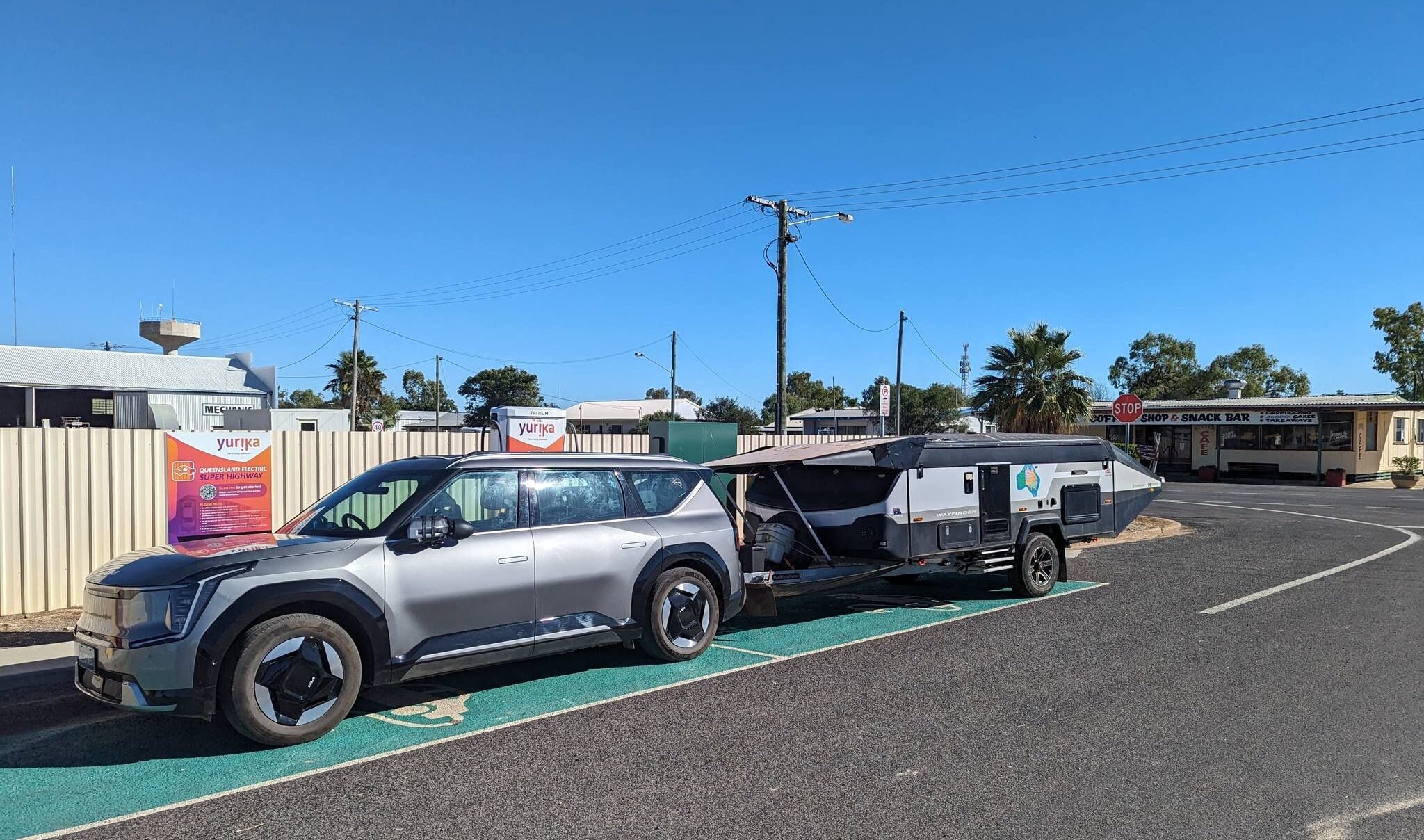
Tim commented on the behaviour of some of the diesel-powered grey nomads. “Some like to leave early in the morning from the campsite or park, in order to get a good site at the next one, and they wake everyone up with their clattering diesel. While camping in non-powered areas, they are running diesel generators. They put these away from their vans and connect with a long extension cord because even they don’t like them. But you can still hear them in the silence of the bush. We didn’t need a generator because the Kia EV9 has plenty of battery power and V2L.”
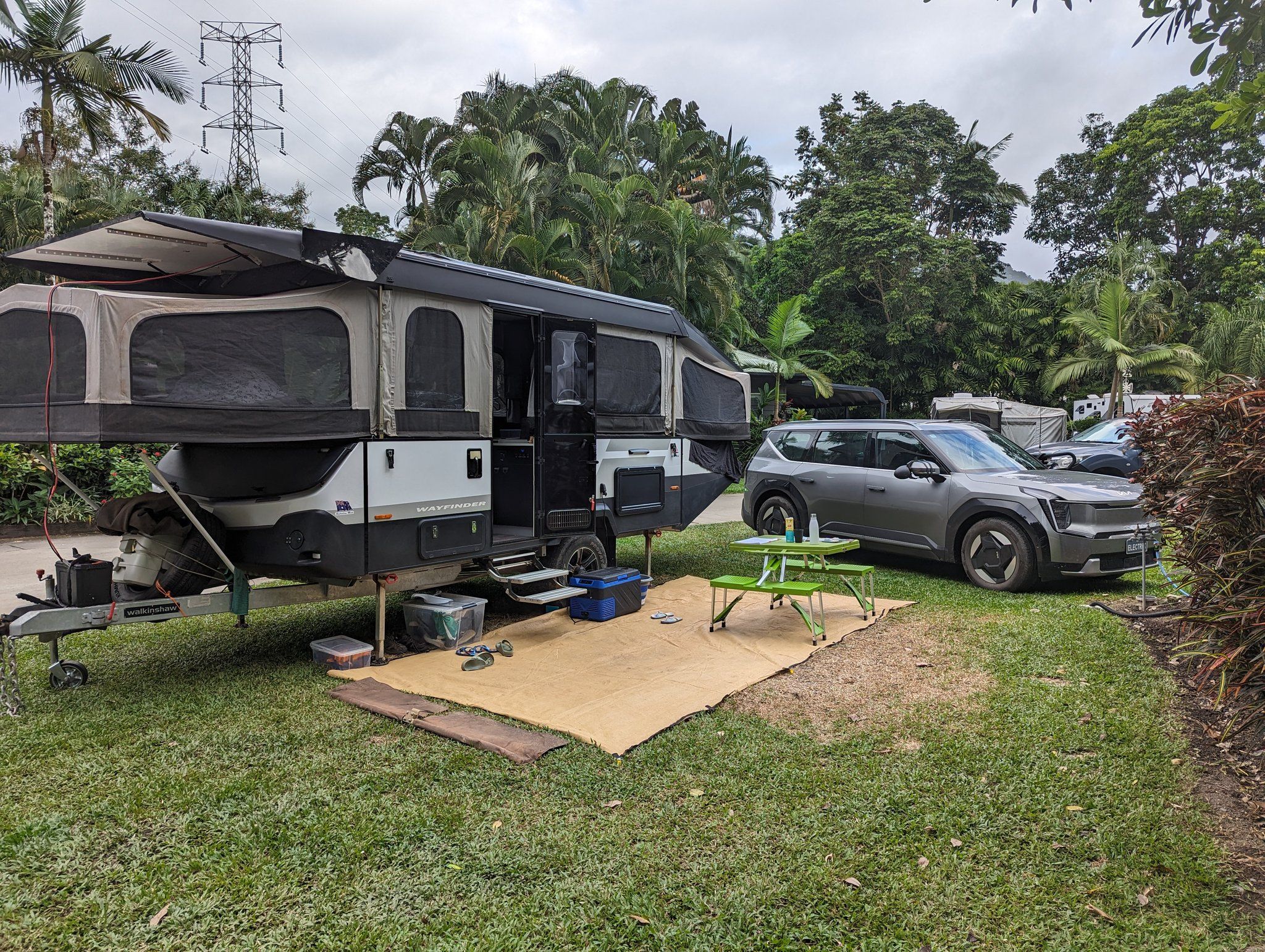
For added power, Tim had fitted flexible fibre glass solar panels on the roof of the car and the caravan. Five were fitted on the van and one on the car. These are permanently installed. While driving, he got 2.5 kW from both sets. If he left the van and went sightseeing in the car, the van collected 2.1 kW to feed into the 10-kW battery powering the appliances.
Any excess power left at the end of the day (usually more than 80% of that) can trickle charge the car, ready to collect more sun the next day.
Part of the modification process was the removal of all gas appliances from the van and replacement with electric — induction stove, microwave, hot water, aircon, electric blankets, and entertainment (got to keep the kids happy). Glamping it certainly is. I enquired about the costs of setting up the rig. Tim tells me that the camper was bought second hand for AU$32,000. The modifications cost about AU$8,000. Apparently, Walkinshaw now makes a special edition of this camper. Tim kept costs low by doing most of the work himself. The Kia EV9 was AU$125,000. This is the “Earth” variant. It is the lowest spec of 4 wheel drive with necessary tow rating. Check it out here if you want to follow Tim’s example.
Spending AU$160,000 for this setup compares favourably to amounts spent on the rigs grey nomads are using for similar trips. Then they have to spend lots more, as diesel is not cheap once you leave the capital cities — but solar power is free! Tim estimates that halfway through his trip, he has spent about AU$1,128 to cover almost 19,000 km (that’s almost 12,000 miles for my American readers). The Kia EV9 has more power and torque than a V8 Land Cruiser, yet has cost approximately 20% of what it would have cost to do the trip with a diesel.
Tim tells me “We make 5 days’ worth of van power every day. So, we can weather 4 shady days if we have to. On the whole trip we never ran out. We had indefinite off-grid power. We would run out of water and food before we ran out of power. Other campers were making multiple trips into town with Gerry cans to fill up for their generators.”
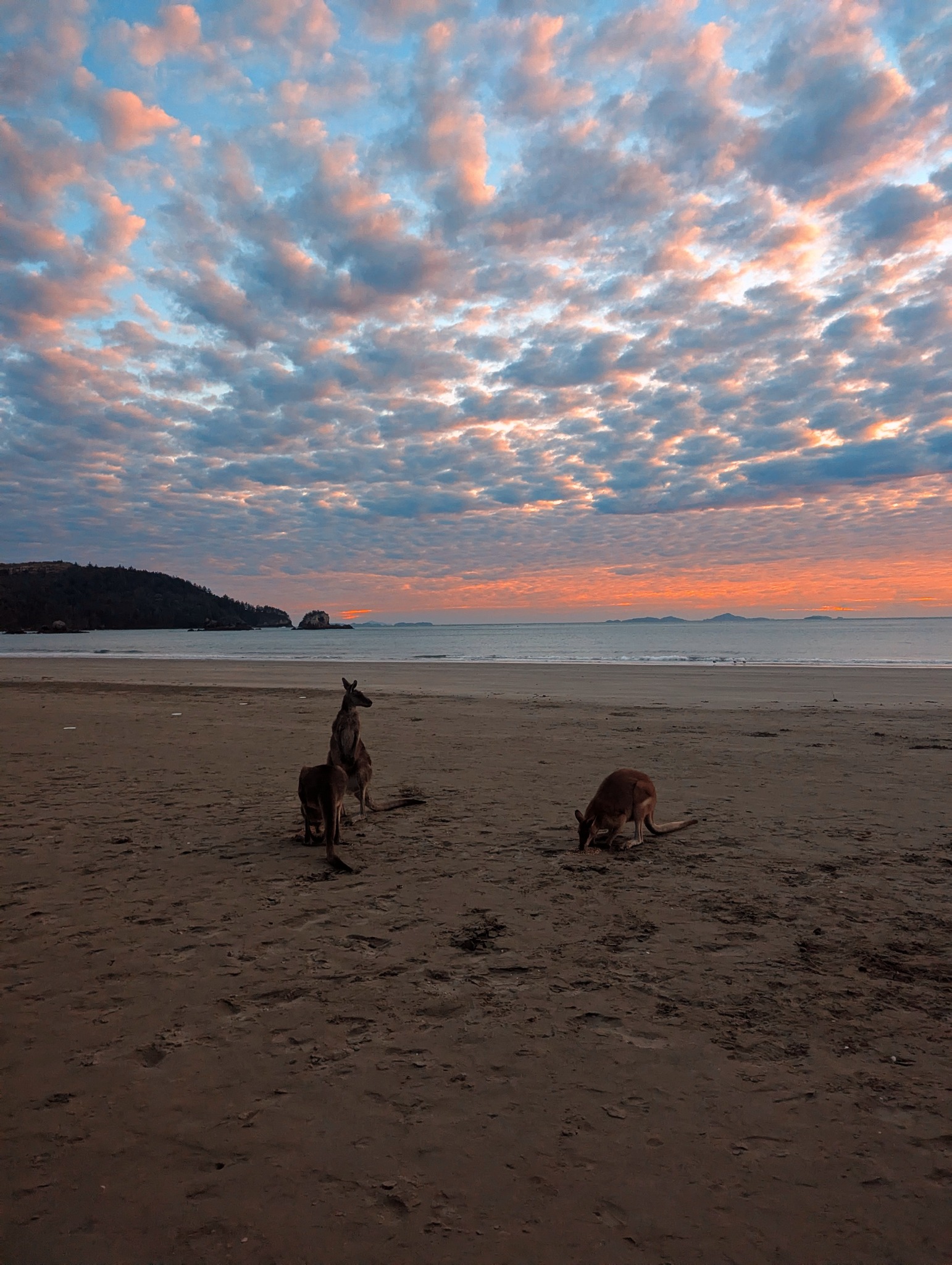
I asked him about advice for those who want to emulate his example. “Once you get going, it is less stressful than you might think. Start small with trips closer to home. There are lots more options for charging — especially caravan parks. That gets rid of the range anxiety.”
“Easy for you,” I interjected, “you had backup solar panels on the roof.”
“Ninety per cent of the trip we didn’t have to depend on the power coming from the solar panels on the car and van. That was plan B or C. The trip would have turned out exactly the same without the panels — maybe with a little more anxiety at the beginning. Because the Kia EV9 has so much power available, we haven’t had to skimp. We were truly glamping in the van with an induction stove, electric blankets, microwave, electric hot water, air conditioner, and the ability to charge all the electronic devices.”
Tim recounts some of the funny conversations he had when parked up. His children got chatting with the other kids who were travelling, as they do. “Why aren’t you doing it in an electric?” led to “Wish we were doing it in an electric.” Some parents sheepishly confessed that their children wanted to try and do the big lap in an EV but the parents didn’t think it could be done, so they bought a new diesel before the trip. “You said we couldn’t do it in an electric!” the kids teased Dad. The Kia EV9 with a two-ton van showing up in the middle of nowhere was an eye opener.
The Kia EV9 gives Tim a 550–600 km range around the city. Highway cruising without the van, he gets ~480km. With the van on the back, the range reduces to 280–300 km range. “That’s more than enough driving in a day. If you really want to do more and you are travelling between high-speed chargers on the coast, you can do 280 km in the morning, fast charge during lunch, and then repeat in the afternoon.” The Kia EV9 is a high-tech car but doesn’t yet have the mature software offered by Tesla. “Kia hasn’t had the years of development. But is catching up quickly.” He gave the example of the range indicator which doesn’t take into account meandering roads, headwinds, or elevation. Renee ended up doing those calculations while Tim drove on the few occasions when range was going to be tight.
You can follow Tim and Renee’s adventures on Facebook. And read Renee’s excellent first-hand account of their adventures at Caravan world.
Renee tells us: “Over the past decade, our family has made the transition from internal combustion engine (ICE) vehicles to hybrids, to plug-in hybrids and finally to battery electric vehicles.”
Tim and Renee are building lifetime memories for themselves and their children without sacrificing comfort nor adding to GHG emissions. I am sure that their example will get many more people to try the Big Lap (and other shorter tourism drives) in fully electric mode.
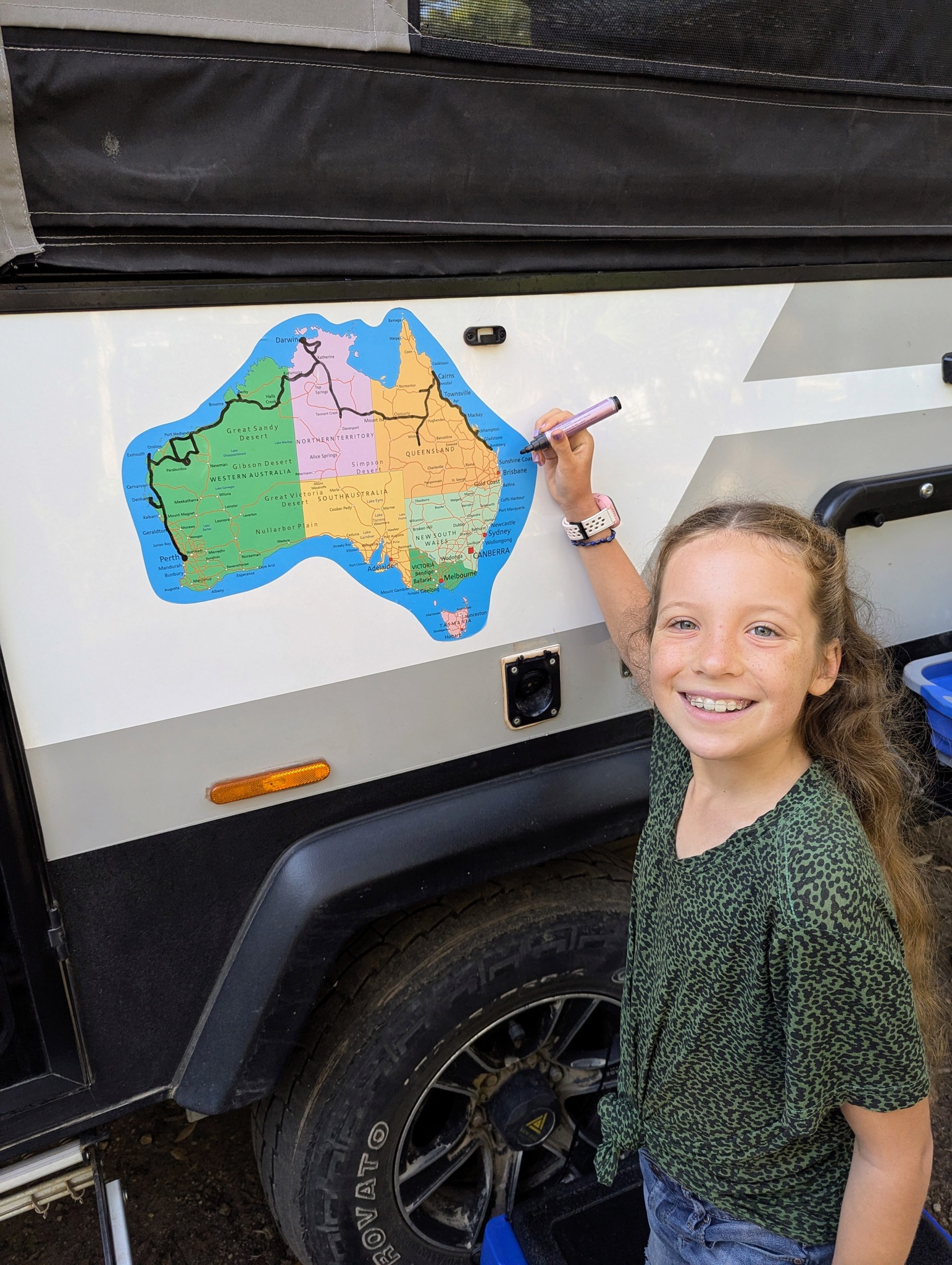
Have a tip for CleanTechnica? Want to advertise? Want to suggest a guest for our CleanTech Talk podcast? Contact us here.
Latest CleanTechnica.TV Videos
CleanTechnica uses affiliate links. See our policy here.
CleanTechnica’s Comment Policy



